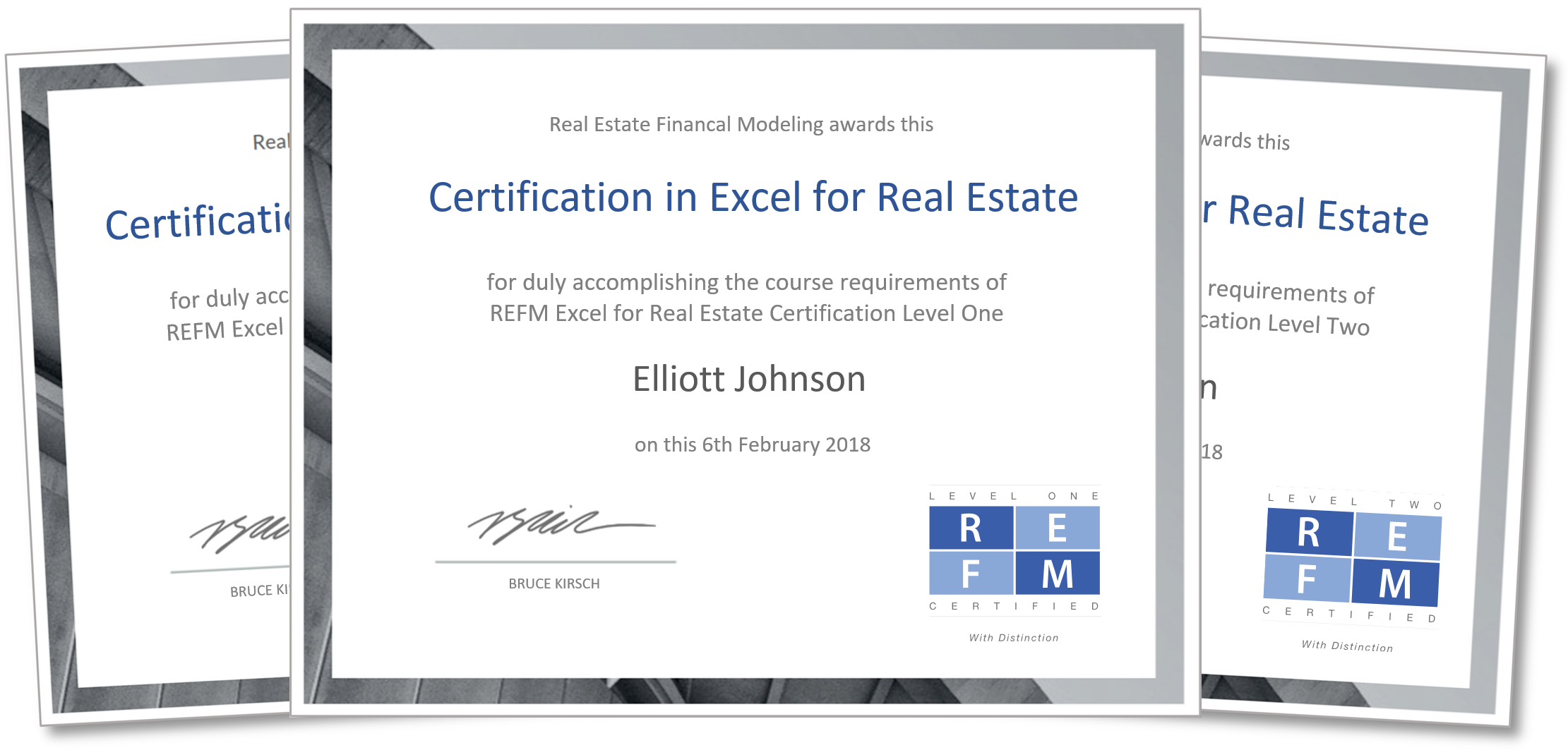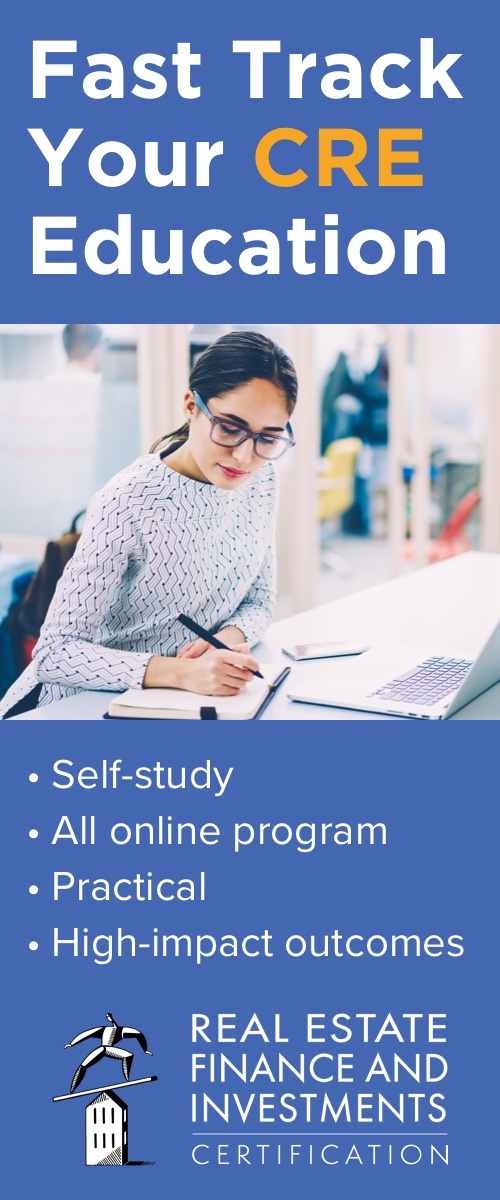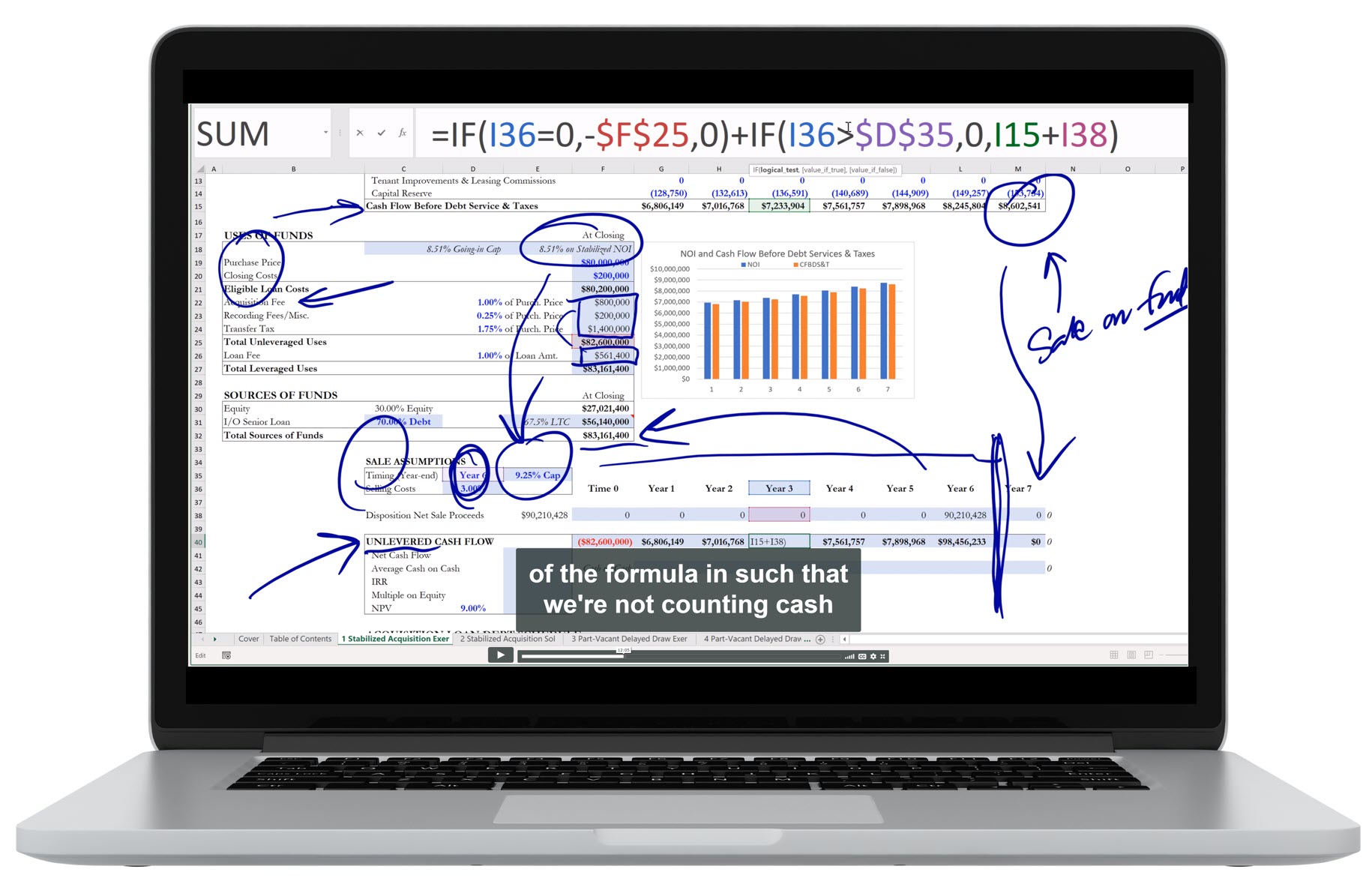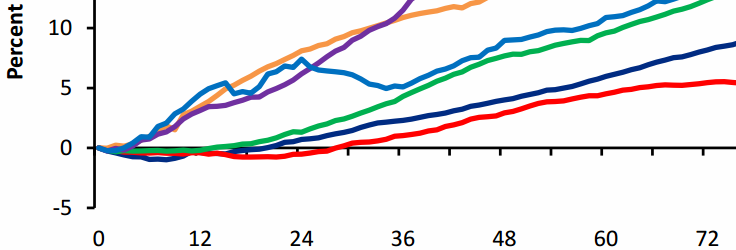Audiobook Recording
Be sure to check out the visual animations at 23:50 through 29:00.
Overview
Listen to this narration if you prefer
Summary
Operating costs can easily be incorrectly forecasted. An increase in expenses will reduce net operating income. Unexpected changes in vacancy can have a large effect on the accuracy of a financial model as well. In a weak or over-supplied market, buildings may have occupancy well below expectations for long periods of time. Liquidity is another underlying risk as it takes a long time to sell a property, and sometimes an investor needs cash quickly. However, real estate also offers unexpected opportunities for investors. Just as operating costs can increase, they can also fall, rents can rise, and property values can appreciate. This chapter lays out some of the risks and opportunities an investor must consider when underwriting an asset.
Conducting market research can help to clarify the supply and demand balance within the market and is the backbone for assumptions made in the pro forma. In this chapter, the importance of conducting such research is reviewed, and examples of sources for information, and what to look for when researching a market are provided.
Finally, this chapter reviews how personal decisions play a role in choosing investments. Investment decisions ultimately depend on who the investor is, how risk-averse they are, and what expertise they bring to the table.
Audio Interview
Risks and opportunities
BRUCE KIRSCH: We have a special treat today. We have Wharton emeritus professor, Peter Linneman with us. And he is going to share some of his insights and experience and wisdom as it relates to topics that are addressed in his textbook, which is used at over 70 colleges and universities in the US and around the world. And so Peter, thank you very, very much for spending some time with us today, and for sharing your thoughts.
PETER LINNEMAN: Well, it’s my pleasure to hopefully make the book come to life in a little bit. As you know, it’s an industry that’s alive and continues to change. So yeah, let’s see what we want to talk about.
BRUCE KIRSCH: OK, terrific. So I guess we’ll start in the beginning. And in chapter 1, what you do is you initially set the table for students to come to understand the big picture of investing in real estate. And namely, for every opportunity that is perceived out there, there are sets of both perceived and unperceived and unknown risks. Unfortunately for students, it’s often difficult to grasp the gravitas and the seriousness of risk, because they don’t really have any experience with risk, even though some of them might think they do. How can students come to appreciate the notion of risk better earlier in their careers? And how can that improve their chances in being a success?
PETER LINNEMAN: Yeah, It’s a great question. And you’re right, one of the things I try to drive home– that while real estate is an exercise that uses a lot of numbers, it can’t be governed just by what the numbers say. It takes judgment and experience and understanding what you can tolerate in terms of risk. And one investor’s risk tolerance may be very different than another investor’s risk tolerance depending on their point in your career, their clientele, their capital source, their expertise.
That’s hard for students understand, because I think most students come to real estate courses thinking it’s mathematics. And mathematics is different than business. Mathematics has an answer– 1 plus 1 is always 2. And 3 times 2 is always 6. There is an answer so that it is a logical process. Mathematics is logic, but it’s a logic where there is an answer.
BRUCE KIRSCH: Right.
PETER LINNEMAN: Business, as you well know, of which real estate is one of the many types of business, is logic. But it’s logic without an answer. There are many answers. Or if there is an answer, we’ll never know it, because the world keeps changing. And none of us are deities. We don’t know the answer.
So the first thing I would encourage students is get out of your mind that business has the answer or the correct answer. Business has many correct answers. And the exercise is to try to find one of them that works for you, at least in the moment. And then six months later, three months later, two months later, you’re going to have to change.
You buy a building thinking you’re going to lease it to the government. And then the mayor changes, and the mayor has a different view. And they don’t want to lease space at all. And even though you may have done a great choice if the mayor was going to be there and the mayor was going to lease– hey, you are now facing a new world. You’ve got to make a new decision and a new decision. So it’s about making good decisions as opposed to the right decision and moving forward. And that’s because life has real risk, as you describe.
The exercise that I always think of– I played a little football in college and I’m a football fan, like many people– and the difference is between the way a play works in the playbook and the way it works in reality on Sunday in an NFL game. In the playbook, every play works with certainty.
BRUCE KIRSCH: Right.
PETER LINNEMAN: The left tackle blocks this person. The right tackle blocks that person. Everything works in a playbook. It just does. That’s the whole point of a playbook– is to design things that work in the right circumstances. And the discipline of a playbook and a play is to set up a chance to succeed. To logically think through that if this piece moves there, if that person does this, if that person does that, this is what ideally would happen.
No coach believes that that will really happen. No player believes that will really happen, because they’re human beings trying to execute in an imperfect world with injuries and weather and so forth. But without a plan, without a logic of what I was trying to do, you’d have no chance so just as in say, football in a playbook, the playbook lays out selecting an alternative that gives you a chance to succeed given what the opposition is doing, given what the world is doing in the case of real estate.
And then you have to evaluate what is it that the world gives, what would be the best play I pick given that they might be blitzing, given that they might be in a zone defense, given that they might be playing man to man. You don’t know what they’re going to do. So you have to use your expertise to anticipate what they might do, and choose a play and personnel set that gives you the best chance to succeed. But it doesn’t guarantee it, because even if you anticipate right, even if you have the quote, “right play,” for what they’re doing, you still have to execute it.
BRUCE KIRSCH: Right.
PETER LINNEMAN: And that execution is very complicated. it involves 22 human beings interacting in real time and real space. Real estate has that dimension, which is just like any player could slip, any player to get injured, Anybody could drop a ball even though they’re wide open. And it happens all the time. It never happens in the playbook. And that’s a good way for a young person, given their own real world experience, to think about it. To think about it in terms of maybe a sports metaphor. Or to think about it in terms of driving a car.
Driving a car, you’re always paying attention, the car always is working fine, there’s never any distractions. But the reality is the car’s not always working fine, you’re not always paying attention. There are other forces– there’s weather. And those are the risk. And you want to put yourself in a situation where you can succeed. That’s why most of us don’t drive in blizzards, for example, with bad tires, because the risks are too high. Yes, I can get from point A to point B if everything goes right, but what are the odds that everything goes right?
There isn’t a mathematical answer. You’ll never know if you were right or wrong. You just have to make a decision to either do something or not do something. And then work with it and keep adjusting.
BRUCE KIRSCH: I agree completely. And I think about business a lot, because I am a small business person. And I updated my business plan recently. And, you know, you sit there, and you write a 50 page business plan, and you refine it over and over and over again. And then at some point, you print it out, and then you forget what you did with it. And then life happens, and the world happens to you. And you can’t even find the business plan if you need to, because your office is such a mess
But it’s an exercise in organizing your thoughts and having some general idea of the trajectory that you want to go in. But when reality intercedes, at the end of the day, you’re really left with your wits.
PETER LINNEMAN: And you’re right. And the only thing I caution students and young people– when I say students, I mean– in fact, I caution all of us, myself included, and I’m hardly young– is there’s a tendency to say, what the hell am I doing all this analysis for if it’s never going to turn out this way? And it’s exactly what you said. It’s the discipline of making sure I understand why I’m doing it. That I understand what are the risks so I can make sure I have the skill set to succeed if things kind of go wrong.
Now obviously, if things go horribly wrong, you’re not going to succeed if they go horribly wrong. But at least give yourself a chance– to use the sports analogy, I may not score a touchdown, but at least I pick up 5 yards.
BRUCE KIRSCH: Right.
PETER LINNEMAN: At least there’s something that I can achieve, if not the ultimate objective. That I don’t fumble it, that I don’t throw an interception. And so there’s a tendency for students to say, well, I’ll just use my gut. And my answer is you don’t have a good enough gut yet. You have to earn a gut in a funny way. When you hear these great people make statements, like, well in the end, you have to just use your gut, first of all, of them did a lot of analysis first. They all did a lot of thinking first. They all did a lot of analytics up the market and such first.
And secondly, they’ve got a gut that’s been honed over many years. And that’s not the same as a 25-year-old saying, well, I’ll just use my gut, because that’s what some great investor says they use. They don’t have a good enough gut yet.
BRUCE KIRSCH: Right. You know, it’s interesting– there was an article, I don’t know, within the last year or so by Malcolm Gladwell in The New Yorker, which was essentially disparaging this whole notion of entrepreneurs as these wheeler dealer risk takers. And it’s basically saying, yeah, Ted Turner seems to the outside world like he takes these incredible risks, but he grew up with the billboard business in his background. And it’s not like he didn’t study the heck out of every one of these big moves that he made before he, in fact, put the money at risk.
PETER LINNEMAN: Plus, to that point– it’s perfectly stated. On that point, Alfred Taubman, the founder of The Taubman Company, a major shopping center developer, public company, one of the star real estate companies over the last 30, 40 years– Alfred once said to me that people think real estate development, which is a subcategory of real estate, is about taking risk, and he said quite the opposite. It’s about eliminating all the possible risks you can. And you’re still going to be left with some that you can’t avoid. But it’s about eliminating as many risks as possible. Or at least if you can eliminate, really understand them. It’s about the minimization of risk rather than the taking of risk.
BRUCE KIRSCH: Right. Completely. Two of the old saws that one of my mentors from the Wharton alumni community gave me were experience is what you get when you don’t get what you want.
PETER LINNEMAN: Truly.
BRUCE KIRSCH: And then real estate, we’re in the business of mitigating risk. That’s what we live in.
PETER LINNEMAN: Absolutely. And in fact, most investment businesses and a lot of operating businesses are in the same thing. They’re in the business of mitigating risk rather than taking risks. Or another way to say it– you’re in the business almost like a card player– of taking highly calculated risks as opposed to just risk. I mean, imagine playing poker without knowing the rules and just gambling. That’d be crazy. And the whole point is to know the rules to know the odds and then make calculated risk judgments.
And every poker player would love to have royal flush, right? Because then all the risk is gone. They’re not like they want to almost have a royal flush and then have to bluff. They want to eliminate all of them. It’s just that you generally can’t do that.
BRUCE KIRSCH: So something that I’ve found in my limited personal experience in business and real estate is I’ll get very excited about an opportunity and I start to think about all of the upside and all the positive things. And the real driver of the success of the transaction, the linchpin, is something that I just assume is a foregone conclusion. Such as when we were looking at a project in 2007, and our customer and user was going to be a subprime mortgage buyer, someone who would have access to that type of financing.
And the foregone conclusion was that in 18 months, when we delivered, that buyer will be there. And as we all know, that market totally cratered. And we didn’t think about it for half a second. Luckily, we walked away for other reasons several months prior. But how do we get ourselves out of this rut of just overlooking those most important things that we consider to be the sure things?
PETER LINNEMAN: Well, I’ll give you a couple of examples that I’ve lived. About a year before Arthur Andersen went out of business in a matter of weeks, Arthur Andersen, had they been rated, would have been rated probably double A or single A by a credit agency, because oh my god, they were one of the big five accounting firms forever. And with an incredible book of business, et cetera, et cetera.
And so one of my clients had bought a building that was 50% occupied by Arthur Andersen for, I think he had 21 years to go on the lease. And they viewed it as collecting a coupon. And then 21 years from now, you’ll sort out the leasing of it. And then a matter of nine months later, Arthur Andersen’s out of business, because one of their accounting teams had done something deemed inappropriate at Enron, and they were being sued to the point that the firm disintegrated– literally disintegrated in, as you know, overnight. So here you go from an absolute credit tenant with a long lease to it’s disappeared. Now if that can happen to Arthur Andersen, it can happen to kind of anybody.
I’ll give you another– you talked about the thing you most assume– escrow. You have agreed to buy something. And you put down a deposit to show that you’re earnest and that you’re serious, and they say they should take you serious. And by the way, it’s even a refundable deposit. So you put it with a third party who you trust. And they hold the money. And if certain events happen, then the money is given to the seller. And if certain things don’t happen, as you know, it’s given back to the buyer.
Well, I was close– fortunately, I wasn’t the victim– I was courted as a victim, but I didn’t end up being a victim, because I thought the deal smelled odd. But a friend, a very experienced friend, a very seasoned professional, went into escrow, put, I think it was about 800,000 refundable money in an escrow account on a transaction. And it turned out the entire thing was a scam. It was a con. The whole thing was about getting you to go to escrow.
And the buildings existed, but they had nothing to do with them. This was straight out of like a movie, Right The whole exercise was simply to get you to go to a refundable deposit, and then the escrow agent, who worked for a major brokerage firm, so you kind of thought, well, that guy was bought off and the money disappeared.
Now ultimately, the district attorney has tracked them down and arrested them and so forth. But by the way, you don’t have your 800,000, because they spent it. And you go, what could be more rudimentary than something like escrow? And yet even that has risks. Namely, you better know your escrow agent. And as you know, you always heard stories, like urban legends of people who got cheated in escrow. This was the only time I ever was kind of close to it.
And that was actually another message lesson for me, which was when you don’t understand something, when you really don’t understand the deal, whether it’s too good to be true or it’s just you don’t understand it, don’t do it. Just forget it.
And this was one of those that it was just too good to be true. And I and I just blew it off because it didn’t make sense to me why they would want it. Well, it didn’t make sense. It was a scam. But, you know, anything is rudimentary from an escrow being a scam to a credit tenant disappearing and sort of everything in between.
By the way, I’ll give you another one that goes back to the 1980s. 1980s– and I’m sure it’s happened since then– but in the 1980s, you had a bunch of major banks that were in savings and loans, actually, that were in major expansionary mode. So what the savings and loan would do is say, Bruce, I want you to build 800,000 square foot office building for me, and I’ll give you the loan to build the 800,000 square foot office building for me.
So you go about your merry way, building the 800,000 square foot office building for the saving and loan, believing fully that you’ve got this tenant, they signed a lease. When it’s gone or they signed a purchase contract when it’s done, and so you took the loan, and you had a profit margin that you thought was pretty safe. Then the savings and loan was taken over by the United States government, because the savings and loan was insolvent.
The United States government then came to you as the developer and said, first of all, we’re insolvent. That savings and loan is gone. And the contract, therefore, to take the space is void. There’s no company any longer to take the space. But, by the way, you still owe us the loan.
BRUCE KIRSCH: Right.
PETER LINNEMAN: So you talk about were only going to do it because of that company who gave you the loan was going to take the space– they go out of business and you’re stuck with the liability of the loan, but you don’t have the asset, which is the lease. Crazy things can happen.
BRUCE KIRSCH: Right.
PETER LINNEMAN: And you just have to kind of go in with that. Now you can’t be paralyzed by analysis. If you try to eliminate risk to a mathematical certainty, you’ll never make a mistake, but you’ll never do anything.
BRUCE KIRSCH: Right. I agree. And you can convince yourself out of taking any risks or doing any investments. And obviously, for the world to move forward, we can’t all get to that place. There is always that ultimate leap of faith into some darkness that you have to be willing to take. After having studied that every which way possible, and then put it to the side, and just let it digest, and maybe spend some time away from it, and then come back with some fresh perspectives. But there’s still that entrepreneurial leap that you take.
And so I think that the way that you framed the rest of the textbook by opening it up in chapter 1 with these thoughts is terrific. And it sets the stage for people to understand the material for what it really is. And for the real stakes that are at play.
PETER LINNEMAN: Well, you talk about the real stakes for a young person. One of the real stakes is don’t destroy your reputation. And in fact, the other way to view it– the goal in life is to go through life without destroying your reputation. Namely, to build a reputation, but don’t destroy it along the way. And there are plenty of tragic instances of people who did build tremendous reputations over their career and then one event sort of wiped out their main asset, which was their reputation.
And that’s why one of the big issues is when you’re starting out, you cannot afford– unless you’re a billionaire by inheritance or something– but if you’re starting out, your main asset is your reputation, and the other is your willingness to work. And you can’t afford mistakes because you haven’t got enough asset in your reputation to squander it. And therefore, when you start out, go work for somebody else. Go piggyback off their reputation. Namely, you kind of– what do we say– not guilt by association, but merit by association.
BRUCE KIRSCH: Right.
PETER LINNEMAN: First of all is try to get merit by association, whether it’s for development or finance. If you wanted to financial type of things, go work for a great finance company and try to get merit by affiliation. Or if you want to be a developer, go work with a developer and try to get by affiliation. Interestingly, not many development types care that you work for a great finance company or vice versa. So you want to get something that means something to people.
And then the other is under-promise and over perform, especially when you’re young. Always, but especially when you’re young, under-promise and over perform. And most of us sort of try to do the opposite. We’re very good at over promising and then under-performing. And that’s a tough way to go. It’s a real tough way to go. Everybody understands things can go wrong, but under promise and over perform.
Everybody says, oh, these are my conservative projections. Nonsense. Those are your just less optimistic projections. I always thought that when people say this is the worst case scenario, you say, no, let me tell you the worst case scenario is a terrorist attack on my building, it’s uninsured, and they use nuclear materials, so it won’t be usable for 50 years. That’s the worst case.
PROFESSOR: Right.
PETER LINNEMAN: Don’t tell me that I lose one tenant and the rent falls by $1. That’s not the worst case. I mean, be realistic about this.
BRUCE KIRSCH: Truth is stranger than fiction. And just the longer you’re out there, the crazier the stories that you hear. And nothing that you see in the movies really shocks you after that.
PETER LINNEMAN: You’re exactly right. That’s the one great merit of being older– it’s like you’ve seen a lot of great movies and you read a lot of great books and you’ve seen a lot of characters, and you go, wow, this escrow stuff really happens, this tenant stuff really happens. Somebody actually did mix the concrete. Somebody actually did measure’s how much steel was needed. Stuff that should never happen, and yet it does. And you just got to figure it out.
BRUCE KIRSCH: Thank you so much, Peter, for sharing your thoughts with us today. We look forward to doing more of these in the future. And to the folks who listen to this on the blog, please put your comments below. And let’s get a good dialogue going about the things that we’ve learned here today and other items that you can add to the conversation. Thanks again, Peter, and we’ll talk to you soon.
PETER LINNEMAN: My pleasure, and I look forward to it. Thank you.
Additional Multimedia
Timelapse animation of Lake Mead and the city of Las Vegas, Nevada, from 1972-2021, as captured by Landsat sensors. The images are false-color, showing healthy vegetation in red.
Source: NASA
Excel Figures
Key Term
Discounted Cash Flow (DCF) – analysis framework that postulates that the value of a property is equal to its expected future cash flows discounted to present dollars; premised upon two basic concepts: 1) the only source of value for a property is its ability to generate future cash flows, 2) a dollar received today is more valuable than a dollar received tomorrow.
Chapter Headings
- Risks and Opportunities – That’s What It’s All About
- The Risks
- Operating Expenses
- Vacancy
- Natural Disaster
- Leasing
- Liquidity
- The Opportunities
- Operating Expenses
- Terminal Value
- Rental Growth
- Where You Should Focus Your Analysis
- Market Research
- Personal Decision
- Risk Parameterization
Learn about REFAI Certification
< Prerequisite III | Amortization Fundamentals
Ch 2 | What is Real Estate and Who Owns It? >
Table of Contents
Index
Buy the Book






